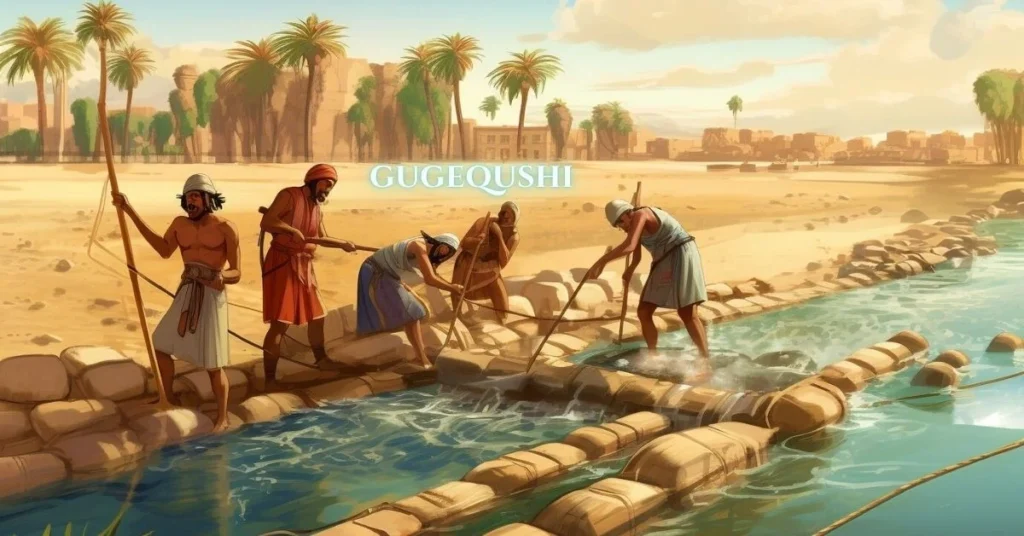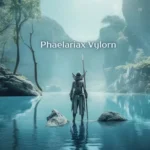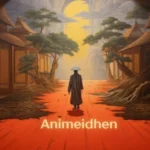Introduction
Gugequshi is not just a term; it embodies a rich cultural heritage and evolving tradition that transcends time and borders. This remarkable concept has its roots deeply embedded in ancient rituals, legends, and traditions, yet it has found new life in modern storytelling across the globe. In this article, we will explore the fascinating journey of Gugequshi—from its origins and historical significance to its transformative role in global narratives today. By examining its evolution, traditional elements, and modern adaptations, you’ll gain a comprehensive understanding of how Gugequshi has become a symbol of cultural continuity and innovation.
The Origins of Gugequshi
Early Beginnings
The story of Gugequshi begins in the mists of time, where ancient communities used oral traditions to pass down narratives from one generation to the next. These early renditions were not only a method of storytelling but also a way to preserve the cultural identity and communal memory. In these formative years, every tale, song, and ritualistic performance served as a vessel carrying the wisdom and values of the ancestors.
Cultural Roots
At its heart, Gugequshi is deeply intertwined with the cultural practices of various communities. It draws from an amalgamation of myths, folklore, and oral traditions that have been carefully preserved over centuries. The cultural roots of Gugequshi lie in ancient societies that celebrated the power of narrative as a means to connect with the divine and explain natural phenomena. These early stories were often marked by symbolism, metaphors, and allegories that continue to resonate in modern interpretations.
Historical Significance of Gugequshi
Historically, Gugequshi served as a crucial medium for documenting and transmitting historical events, moral values, and community practices. In a world where written records were scarce, these storytelling sessions became the archival source of history. Elders and community leaders acted as the custodians of collective memory, ensuring that the essence of their heritage was never lost. This oral tradition not only helped in educating the younger generation but also strengthened community bonds by fostering a shared sense of identity and purpose.
Traditional Elements
Folklore and Mythology
One of the most captivating aspects of Gugequshi is its rich tapestry of folklore and mythology. Many of these stories are infused with elements of magic, heroism, and the supernatural. These narratives served multiple purposes—they entertained, educated, and instilled moral values. Characters in these tales often faced monumental challenges, mirroring the struggles of everyday life while offering lessons in resilience, bravery, and wisdom.
Rituals and Celebrations
Another cornerstone of the traditional framework of Gugequshi is the set of rituals and celebrations associated with it. Festivals, ceremonies, and communal gatherings were integral parts of this tradition, where stories were narrated through dance, music, and drama. These events were not merely entertainment but had deep religious and spiritual connotations, reinforcing the community’s connection to its cultural and ancestral heritage.
The Evolution of Gugequshi
Literary Transformations
As societies evolved, so did the form and content of Gugequshi. With the advent of written language, many of these oral traditions were transcribed and transformed into early literary works. This transformation was not a simple act of recording; it was a dynamic process that allowed storytellers to refine their narratives, infuse them with contemporary elements, and experiment with different literary styles. Today, these texts are treasured as historical documents that offer insights into the social, cultural, and political landscapes of ancient times.
Societal Impact
Beyond its literary value, the evolution of Gugequshi had a profound societal impact. It became a mirror reflecting the changing dynamics of society—its conflicts, triumphs, and transformations. As communities began to adapt to new challenges and modern influences, Gugequshi emerged as a platform for critiquing social norms and advocating for change. This dual role as both a preserver of tradition and a catalyst for innovation illustrates the dynamic nature of the storytelling tradition.
Globalization of Gugequshi
Influence on Modern Storytelling
In today’s interconnected world, the influence of Gugequshi has extended far beyond its indigenous origins. Modern storytellers have embraced its narrative techniques, finding inspiration in its blend of tradition and creativity. The narrative structure of Gugequshi—rich in metaphor and symbolism—resonates with contemporary audiences who are increasingly seeking depth and meaning in the stories they consume. From novels and films to podcasts and digital content, the essence of Gugequshi continues to inspire creators worldwide.
Cross-Cultural Integration
One of the most exciting aspects of Gugequshi’s globalization is its ability to integrate into diverse cultural contexts. As globalization accelerates cultural exchanges, elements of Gugequshi are being incorporated into storytelling traditions in various parts of the world. This cross-cultural integration has led to innovative narrative forms that blend traditional elements with modern sensibilities. By weaving together narratives from different cultural backgrounds, storytellers are creating new, hybrid forms of literature and art that resonate on a global scale.
Artistic Expressions of Gugequshi
Music, Dance, and Theater
The artistic expressions of Gugequshi are as diverse as they are captivating. In many cultures, the stories of Gugequshi are brought to life through music, dance, and theater. Traditional songs, often accompanied by rhythmic beats and soulful melodies, serve as musical narratives that celebrate the themes and characters of Gugequshi. Meanwhile, dance performances interpret these stories physically, using movement and expression to convey emotions and cultural histories. The theatrical dimension of Gugequshi, marked by dramatized renditions of ancient tales, further cements its role as a multifaceted art form that transcends the boundaries of language and geography.
Visual Arts
Visual arts have also embraced the story of Gugequshi, with artists drawing inspiration from its rich symbolism and vivid imagery. Paintings, sculptures, and murals depict scenes from traditional tales, offering a visual representation of a narrative that words alone might not capture fully. This integration of visual art has not only helped preserve the ancient heritage of Gugequshi but also offered new perspectives, as modern artists reimagine these traditional elements in innovative and thought-provoking ways.
The Modern Face of Gugequshi
Contemporary Adaptations
The modern world has provided a fertile ground for the adaptation of Gugequshi into contemporary narrative forms. Writers, filmmakers, and digital content creators have reinterpreted ancient tales, infusing them with modern themes and addressing current social issues. These adaptations are a testament to the enduring relevance of Gugequshi—its themes of struggle, resilience, and triumph continue to resonate with today’s audiences. Whether it’s a novel reimagining old legends or a film that blends ancient wisdom with modern technology, contemporary adaptations of Gugequshi ensure that the tradition evolves while staying true to its roots.
Digital Media and Social Platforms
In the digital age, Gugequshi has found new avenues for expression via social media and digital platforms. Blogs, vlogs, podcasts, and online video series offer fresh takes on ancient storytelling traditions, allowing global audiences to experience these narratives in innovative formats. Social platforms have enabled storytellers to engage directly with their audience, sparking discussions, debates, and collaborations that further enrich the narrative tradition. The interactive nature of digital media means that Gugequshi is no longer a static cultural artifact but a dynamic, evolving conversation that welcomes contributions from storytellers worldwide.
Preservation and Education
Cultural Preservation Efforts
As the world becomes increasingly modernized, preserving traditions like Gugequshi poses significant challenges. Many communities are actively engaged in initiatives to document and safeguard these ancient narratives. Preservation efforts often involve recording oral histories, digitizing manuscripts, and organizing cultural festivals that celebrate traditional storytelling. By undertaking these measures, communities not only protect their heritage from the erosive forces of modernization but also create a bridge between past and present—a reminder of the enduring power of narrative as the soul of a culture.
Educational Initiatives
Educational institutions play a critical role in ensuring that the legacy of Gugequshi is passed down to future generations. Many schools and cultural organizations have integrated traditional storytelling into their curricula, providing students with firsthand exposure to these ancient traditions. Workshops, seminars, and interactive learning sessions allow learners to experience the art of storytelling in a hands-on manner, ensuring that the cultural and moral values embedded in Gugequshi are appreciated and preserved. These educational initiatives highlight the importance of storytelling not just as an art form but as a vital medium for cultural transmission.
Future Prospects
Challenges and Opportunities
Looking to the future, Gugequshi faces a dual landscape of challenges and opportunities. On the one hand, globalization and modernity can sometimes dilute traditional narratives, making it essential to balance innovation with preservation. On the other hand, these same forces open up unprecedented opportunities for revitalizing and transforming ancient storytelling traditions. Modern technology, increased access to digital media, and cross-cultural interactions provide a platform for Gugequshi to not only survive but flourish in a globalized context. The challenge lies in ensuring that the essence of the tradition remains intact even as it adapts to contemporary trends.
Conclusion
In conclusion, Gugequshi is a living, breathing tradition—a narrative force that has seamlessly transitioned from ancient oral storytelling to a modern, global phenomenon. Its journey reflects the resilience of cultural heritage and the innate human need for storytelling. Whether preserving ancient myths through traditional rituals or inspiring modern adaptations via digital media, Gugequshi stands as a testament to the power of narrative to bridge time, space, and diverse cultures. As we celebrate this enduring tradition, it is imperative to continue supporting efforts that preserve its richness and propagate its wisdom to future generations.
FAQs
What is Gugequshi?
Gugequshi is a traditional storytelling practice deeply rooted in ancient cultural heritage. It encompasses myths, folklore, rituals, and literary works that have been passed down through generations, evolving into a global narrative form.
How did Gugequshi evolve over time?
Originally an oral tradition, Gugequshi evolved as communities began recording their stories. This evolution allowed for literary transformations, adaptation to modern themes, and integration into digital and social media platforms.
What makes Gugequshi significant in modern storytelling?
Its blend of rich tradition and adaptability makes Gugequshi significant. Modern storytellers draw on its deep symbolism and narrative techniques, which resonate with contemporary audiences seeking meaningful, culturally enriched stories.
How is Gugequshi preserved and promoted today?
Various cultural preservation efforts, including digital archiving, educational initiatives, and cultural festivals, work to safeguard the legacy of Gugequshi. These initiatives ensure that traditional narratives remain accessible and influential in modern society.
Can Gugequshi influence other forms of art?
Absolutely. Gugequshi has inspired diverse artistic expressions—from music, dance, and theater to visual arts and digital media. This widespread influence underscores its role as a dynamic and evolving narrative tradition.






